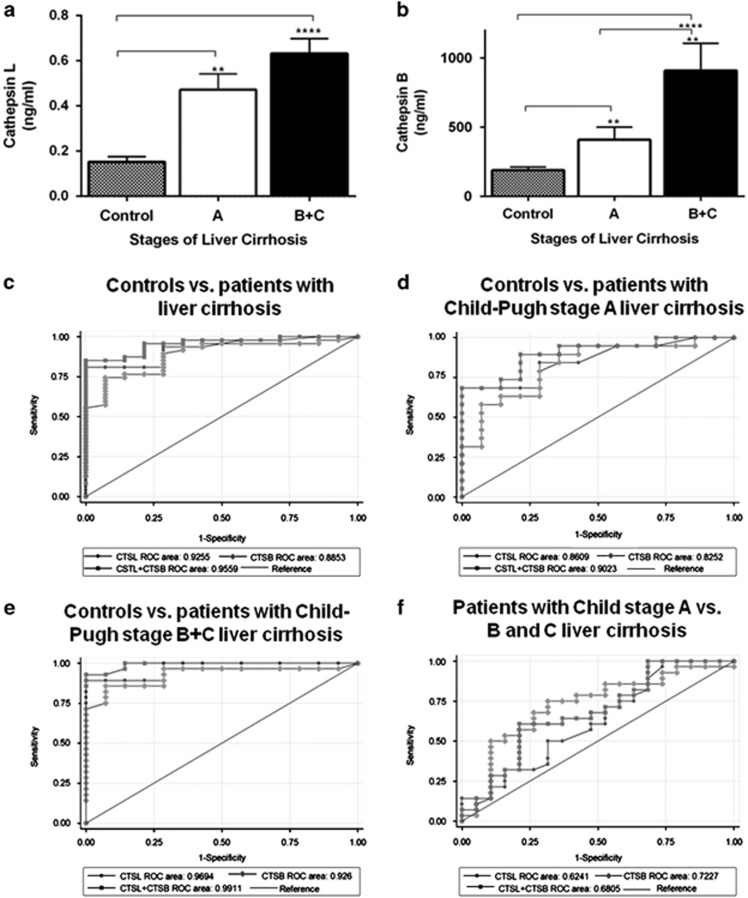Figure 4.
Plasma levels of cathepsin L (CTSL) and cathepsin B (CTSB) increase with Child–Pugh stage of liver cirrhosis. (a, b) Comparison of plasma (a) CTSL and (b) CTSB levels in normal controls (n=15) and patients with liver cirrhosis (Child–Pugh stage A, n=20 and B+C, n=31). Plasma levels of CTSL and CTSB were significantly higher in patients with liver cirrhosis compared with healthy controls. CTSB levels were significantly increased in subjects with Child–Pugh stages B and C compared with patients with Child–Pugh class A liver cirrhosis (values are mean±s.e.m., *P≤0.05, **P≤0.001 and ***P≤0.0001, Kruskal–Wallis H test was used to compare the means of all the groups). (c–f) The diagnostic accuracy of plasma CTSL, CTSB, and their combination in chronic liver disease with cirrhosis. Receiver–operating characteristic (ROC) curves was performed to determine the area under the curve (AUC) using plasma CTSL, CTSB, or their combination to predict hepatic cirrhosis (c) control vs. patients with liver cirrhosis (Child–Pugh stage A+B+C); (d) control vs. patients with Child class A liver cirrhosis; (e) control vs. patients with Child class B+C liver cirrhosis; (f) patients with Child class A vs. B+C liver cirrhosis.

